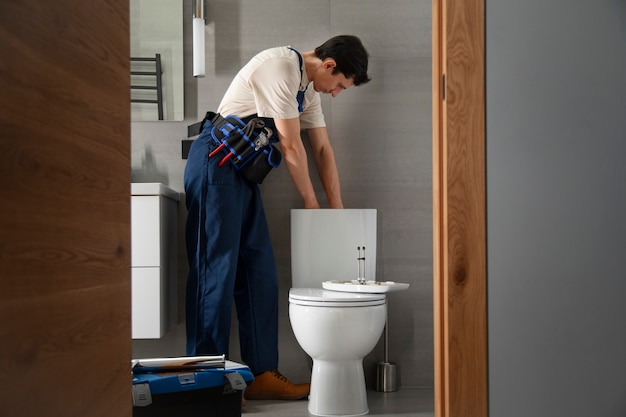
Efficient Bathroom Floor Heating Systems for Comfort and Luxury
In the quest to enhance the comfort and luxury of home interiors, bathroom floor heating systems have emerged as a popular choice. These systems are not only about warming up the floors but also about elevating the overall experience of using a bathroom. The technology behind these heating systems has advanced significantly, making them more efficient and accessible than ever. This article delves into the benefits, types, and considerations of installing efficient bathroom floor heating systems.
Benefits of Bathroom Floor Heating Systems
Installing a bathroom floor heating system offers several advantages that contribute to both comfort and efficiency:
- Enhanced Comfort: Walking on a warm bathroom floor, especially during cold months, adds a layer of comfort that traditional heating methods cannot match.
- Energy Efficiency: These systems can be more energy-efficient than conventional heating methods, as they heat the floor directly, reducing the need for high thermostat settings.
- Even Heat Distribution: Floor heating systems provide uniform heat distribution, avoiding cold spots and ensuring a consistently warm environment.
- Improved Air Quality: Unlike forced-air systems, floor heating does not circulate dust and allergens, contributing to better indoor air quality.
- Space Saving: With no need for radiators or vents, floor heating systems free up space, allowing for more flexible bathroom designs.
Types of Bathroom Floor Heating Systems
There are primarily two types of floor heating systems suitable for bathrooms:
Electric Radiant Floor Heating
Electric systems are known for their straightforward installation and are ideal for smaller areas like bathrooms. They consist of electric heating cables or mats installed beneath the flooring.
- Quick Installation: Electric systems can be installed quickly, often without the need for professional help, depending on the setup.
- Cost-Effective for Small Spaces: Given their efficiency and ease of installation, these systems are cost-effective, especially for smaller bathrooms.
- Read more about this topic.
Hydronic Radiant Floor Heating
Hydronic systems use hot water circulated through tubing beneath the floor. They are more complex but offer superior efficiency for larger spaces.
- Greater Efficiency: Hydronic systems are more energy-efficient over larger areas and can be integrated with a home's existing heating system.
- Long-Term Investment: These systems have higher upfront costs but can be more economical over time due to their efficiency.
- Learn more in this detailed guide.
Considerations for Installation
Before installing a bathroom floor heating system, several factors must be considered to ensure optimal performance and satisfaction:
- Flooring Type: The type of flooring will impact the efficiency of the heating system. Tile and stone are excellent conductors of heat, making them ideal for radiant floor heating.
- Insulation: Proper insulation is crucial to prevent heat loss and maximize the efficiency of the heating system.
- Control Systems: Modern floor heating systems come with programmable thermostats that allow precise control over temperature settings.
- Professional Installation: While electric systems can be DIY-friendly, hydronic systems typically require professional installation for optimal results.
- Explore further insights here.
Conclusion
Efficient bathroom floor heating systems are an investment in comfort and luxury. By understanding the different types of systems and their respective benefits, homeowners can make informed decisions that enhance their living spaces. Whether opting for an electric or hydronic system, the key lies in careful planning and consideration of the unique needs of the space. Find additional information here. Embracing this technology not only transforms the bathroom experience but also contributes to a more energy-efficient home.